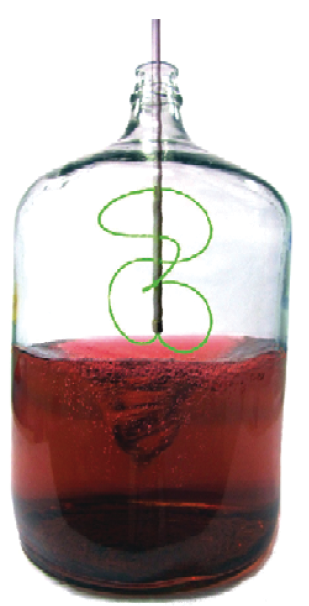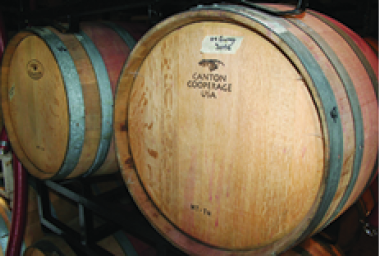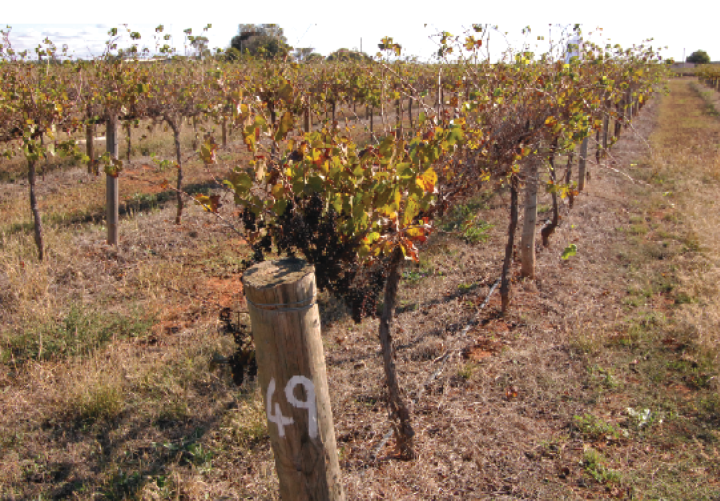
In this article I’m going to go into detail on the reasons behind two of the four most confusing concepts in kit winemaking: 1) Temperature, and why higher is better, and 2) Why degassing is so important to the success of the kit.
One: A hot time in the old kit tonight
One of the most common sources of confusion in kit winemaking are the temperature recommendations for both yeast pitching and fermenting. Not only are they usually higher than traditional temperatures for grape winemaking — as high as 72–77 °F (22–25 °C) in some cases — they’re sometimes higher than the specifications that yeast manufacturers recommend for the strain included in the kit. It therefore seems natural to look to textbooks or do an online search for the “right” temperature, which can be up to 15 °F (8 °C) cooler.
However, there are some really good reasons for the higher temperatures. First and foremost, wine kits are designed, advertised, and marketed based on a short production timeline, between four and eight weeks. That means the wine has to be warm, both to start the yeast quickly and to increase its metabolic rate so it can finish the fermentation in a short period.
And it goes further than that: When yeast convert the sugar in the must into delicious, useful alcohol, they produce a lot of carbon dioxide that needs to be gotten rid of for things like fining and stabilizing to proceed.
First, let’s consider yeast. They need a warm environment to rehydrate, to breed and to metabolise sugars. The temperature of the must when you pitch the yeast onto it is particularly important because of what the yeast’s integument (outer skin) is composed of: It’s two layers of fatty acids that have opposed hydrophobic (water repelling) and hydrophilic (water loving) layers. Yeast cells use these to move liquid and food — grape juice — into the cell and waste products — CO2 and alcohol — out.
Let’s visualize that for a moment: The yeast cell is a living organism that’s inside what is more-or-less a bubble of grease. This works fine since on a microscopic level a bubble of grease has the same strength as a bubble of iron. But it’s still grease, which means that when it’s cold it’s stiff and congealed, and when it’s warm it’s soft and pliable. If the must is too cold, the yeast cell won’t be able to breed or metabolize sugars effectively because of creaky stiffness. Warmer means more work!
Note that this has diminishing returns: Just as a greasy plate will yield to the magic of hot water, so too will your yeast cells if you heat them up too much, anything above 120 °F (49 °C), it will seriously injure yeast and even much above 100 °F (37 °C) they’ll start acting funny and making off-flavors.
Warmer and more work have a lot of downstream implications: The faster the CO2 is produced, the sooner it can escape the wine. If your fermentation is at the upper end of the specified temperature range it may only take five days to finish down to terminal gravity. At that point, CO2 will be escaping the wine and won’t be replaced from active fermentation. However, if the must is at the lower end of that range it may take twice as long to finish fermenting, leaving little time to outgas on its own before fining/stabilizing day. Warmer fermentations that finish sooner do most of the work of degassing for you, so it’s important to have the must warm before the yeast touches it, and to keep it warm all the way through fermentation and on through fining and stabilizing.
Yes, keep the wine warm even after fermentation is complete. This also helps get a head start on degassing your wine — not just because the yeast are finished, but because of the behavior of dissolved carbon dioxide gas in solution. To explain it, we need to invoke The Skeptical Chemist, Robert Boyle. Boyle, along with luminaries like Robert Hooke and Isaac Newton figured out some of the important, basic laws that govern the world around us, and his most renowned work applies neatly to winemakers.
Boyle’s law states that at constant temperature for a fixed mass, the absolute pressure and the volume of a gas are inversely proportional, or from a different point of view, the product of absolute pressure and volume is always constant. We can observe this in many areas of our lives. Refrigerators work by expanding gases, causing them to drop in temperature, and then pumping the cooled gases inside the walls of the fridge. When you use your bicycle pump, the compression of the gas will cause the sides of the pump to heat up — this is even what causes meteors to burn up and space capsules to heat up in the atmosphere. It isn’t friction of the air; it’s the compression of the air ahead of the spacecraft.
How do we apply this? If we consider that as gas is compressed it generates heat, then if we add heat to the equation the gas wants to expand. Keep your fermentation warm and CO2 gas will expand and come out of solution much more easily. We can illustrate this by observing carbonated beverages. Take two identical cans of soda, bury one in ice and put the other inside a sealed car on the hottest summer day of the year. After a couple of hours take them out and open both. The ice-cold can will only hiss a tiny bit and the soda inside will be full of crisp bubbles. The hot can will gush like a high-fructose volcano, spewing soda everywhere, and when it calms down the liquid that is left will be nearly flat and free of bubbles. Keep your fermentation warm all the way through and it will be flat and mostly degassed even before you start fining and stabilizing, which leads us to . . .
Two: Why degassing is important
Commercial wineries process wines over a much longer timeframe than kits, giving the CO2 gas plenty of time to come out of solution. If the wine is aged in barrels the gas escapes even faster, as sealed oak barrels develop negative pressure, actually vacuuming the CO2 out of solution. Large wineries very rarely worry about degassing issues.
Good thing, too: CO2 dissolved in wine produces some odd effects. First, it produces carbonic acid when in liquid solution, giving it a strange, sometimes unpleasant, flavor. Second, it changes the mouthfeel of the wine. If you’re not expecting the prickle of CO2 it can be surprising — imagine, for instance, if your chicken noodle soup was fizzy: That would be pretty weird! Third, the gas itself seems to trap some of those fermentation aromas generated by the yeast, making the wine seem less fruity than it should be, and perhaps even a little stinky.
One of the most common concerns about kit wine is an off taste after bottling. When I’m troubleshooting this, my first suggestion is for the winemaker to half-fill a hydrometer jar with the wine in question, cover it and shake it violently for 60 seconds, and then pour it into a glass, comparing it to the unshaken wine. Nine times out of ten the issue is gone, merely being a byproduct of CO2 in solution. For a kit wine to be “enjoyment ready,” it needs to be free of gas.
There’s another issue with dissolved CO2: Clearing. If there’s dissolved carbon dioxide in the wine when you add your fining agents the gas will prevent the finings from doing their job, keeping the yeast from settling out, thus leaving your wine cloudy and undrinkable.
This happens because fining agents encourage the formation of gas bubbles, a concept called heterogeneous nucleation. In heterogeneous nucleation bubbles tend to form at some kind of interface. A very dramatic demonstration of this is in the diet cola and candy videos on the Internet. The candy is a pellet of compressed minty sugar. When it’s dropped into an open bottle of ordinary cola all of the sugar particles act as nucleation interface points, making cola geysers (perhaps the best use of both products).
Although they’re not particles like sugar, fining agents provide the same kind of nucleation interface that encourages bubble formation. It’s not nearly so dramatic as candy and cola, but what’s important is the result: The bubbles will form, rise to the surface of the wine and eventually they’ll burst and disappear. In doing so they churn the wine up, keeping yeast cells and fining agents in suspension, keeping the wine from clearing on time — or keeping it from clearing at all. The only way to get a wine brilliantly clear is to degas it fully at or before fining day, and the way to do that is not only to stir as the kit instructions demand, but also to keep the wine in the warm end of the temperature range.







